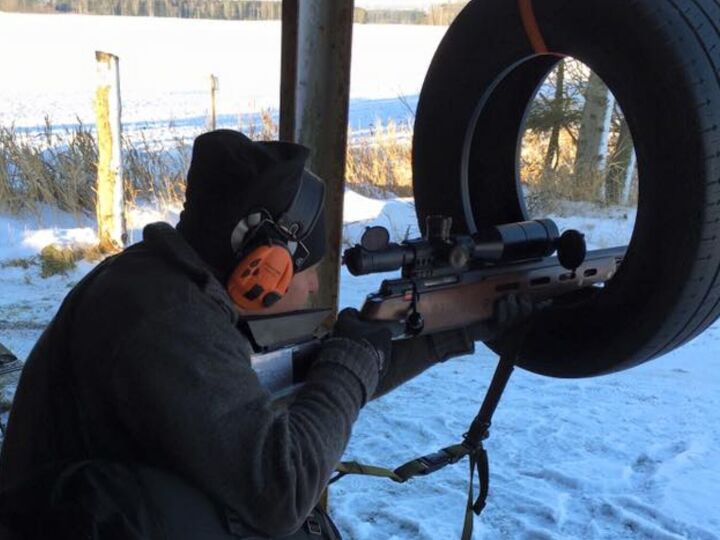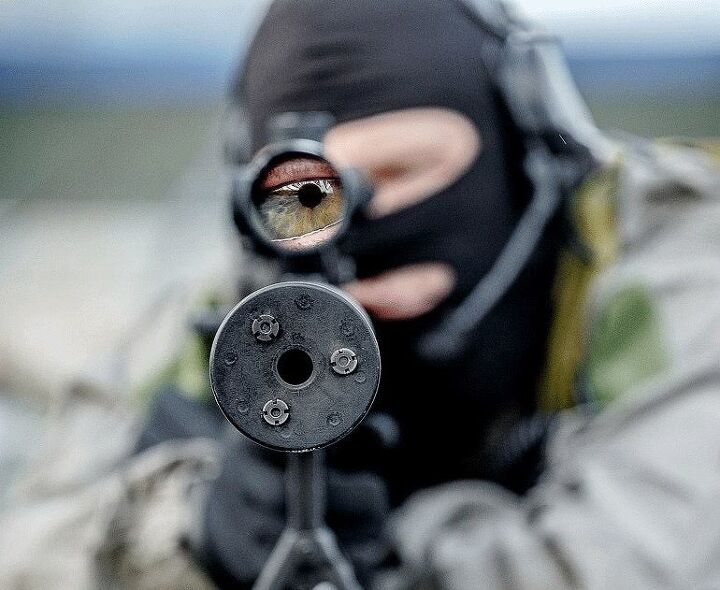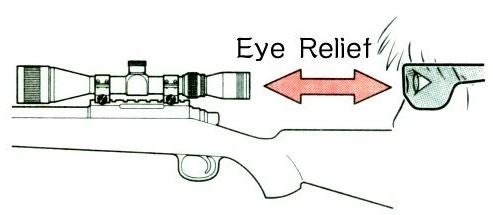If found this little help in one of the Accuracy International‘s manuals – (4.9) Scope Mount Adjustment.
I see some rifles, especially AR15s for some reason, with the scope mounted less than ideal.
When using a scope, we all hope we have the most forgiving eye box on our scope and that our eye’s position is optimal. Unfortunately, that’s not always the case. Especially if you’re competing, stage designers will force you into awkward shooting positions, and all of a sudden all you see is a dark hole down your scope.
Below: You and your scope, outside the comfort zone. Is your eye to close or too far away?

So both the position of the mount and scope, and your eye, has to be correct for you to get the best view.
Remember, if you have to adjust for height as well, it’s only going to make each shot more complicated. Better have your position on the stock as perfect as possible.

Nikon has a good explanation of what the eye relief is: “The eye relief of an optical instrument (such as a telescope, a microscope, or binoculars) is the distance from the last surface of an eyepiece at which the user’s eye can obtain the full viewing angle. If a viewer’s eye is outside this distance, a reduced field of view will be obtained. The calculation of eye relief is complex, though generally, the higher the magnification and the larger the intended field-of-view, the shorter the eye relief.”
Source: Nikon

So, if you’re using a high quality 1x power you’re less likely to have problems. If you’re using a poor scope with an extreme magnification, you better position your eye in the exact position.
My problem is usually number 2, I get too close to the scope. If I’m competing against the clock, this is very stressful as the brain doesn’t understand if the eye has to go forwards or backwards. Hopefully with AI’s little help below I can memorize it.

Leupold has a pretty good video on this subject as well:
“Leupold’s Tim O’Connor explains what you need to know about eye box, eye relief, exit pupil, threshold, and more.”
 Your Privacy Choices
Your Privacy Choices
